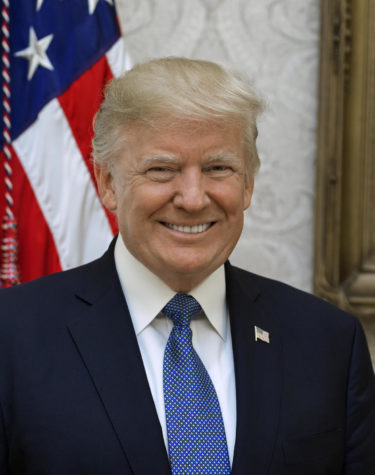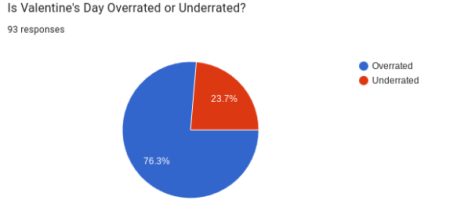Partisan politics leads to unnecessary government shutdown
February 25, 2019

President Donald Trump caused controversy in recent weeks over policy proposals that led to a 35-day government shutdown, the longest in U.S. history.
The U.S. is built on the principles of checks and balances, on the legislature being able to limit the power of the executive and vice versa. But what happens when these two sides collide and the result is a prolonged stalemate? Who is at fault?
In our society today, it seems that the only answers to these questions lie in partisan politics– in one side blaming the other and neither willing to come together to work out a solution. Republicans and Democrats alike attack the other side, and it seems that the mutual dislike for the party across the aisle is the only commonly held belief by both groups.
The government shutdown that lasted for a record 35 days but then was on hold for three weeks is one of the best examples of divided government and partisan relationships. The Republicans blame the Democrats for an unwillingness to fund the border wall, and the Democrats blame the Republicans, particularly President Trump, for creating the government shutdown in the first place.
“Prior shutdowns have been about issues not as controversial as the border wall; it’s more budgetary issues, so this is the most extreme that I’ve seen from a president,” Thomas Kuhn, AP government teacher, said.
While I support a president willing to take action to get his plan in place, I do not support actions that go against the will of the people or actions that cause a prolonged partial government shutdown. When I think about proper ways to make a point, I don’t see partially shutting down the government as the way to make that happen. Instead, I envision a process that goes through the proper legislative channels.
For background on the issue, the partial government shutdown that occurred throughout much of January led to a lack of funding for many governmental agencies, including the TSA and the national park services. The shutdown also led to missed paychecks for about 800,000 federal workers.
“It’s not just some game; there are people that are actually struggling that don’t have money and don’t even have any money to feed their families anymore,” Nicole Nowicki, junior, said.
The base of the shutdown is found in the arguments among Trump, Speaker of the House Nancy Pelosi (D) and Senate Minority Leader Chuck Schumer (D) over funding for the border wall, one of the cornerstones of Trump’s campaign. After the Democrats rejected Trump’s plans for a wall, he proceeded to shut down the government by cutting off funding to government agencies.
“I think [the shutdown] just highlights how immature Trump is in general…because…shutting down the government for maybe two days just to make a point is one thing, but keeping it closed for almost an entire month is so detrimental to our country,” Nowicki said.
Throughout the shutdown, the media highlighted the struggles families were facing and brought up the possibility of less security as a result of TSA agents not coming into work. However, the media could also have been sensationalizing the reality, bringing up the question of the actual troubles the shutdown had caused if the media is showing bias.
“I think the media is making a bigger issue than it really is. Some people that I know that work in government, they’re doing fine and they’re not feeling the pinch yet, maybe that second paycheck might do that, which is tomorrow [said at the time of the interview]…but the media is going to tell you the certain stories to show you how bad it is,” Kuhn said.
The main issue I have about the shutdown is the president so blatantly going against the will of Congress. The 2018 midterms just ushered in or re-elected many representatives, leading to a Democrat-controlled House and many voting against Trump’s call for border wall funding. I see this as the president going against the will of the people who just made their views on the wall evident in November.
“I would say that the Democrats winning the House elections is a clear mandate that the people did not want a border wall,” Kuhn said.
Once the shutdown was postponed for three weeks after Pelosi, Schumer and Trump finally reached a deal, there was still the question of the shutdown continuing after the three weeks were up and how far Trump was going to push the will of Congress and the people to support the border wall or support him in the 2020 presidential election. While Trump may still have his hardcore supporters behind him even after the shutdown, it is possible that more moderate Republicans may not be so loyal after the past month or if the shutdown were to continue.
“For a guy that already didn’t have the majority of votes, ever, and then won those slim majorities in those key states, he’s definitely lost those, and I don’t see any way he’s going to win those states back, so I don’t think Trump can recover from this,” Kuhn said.
The government is supposed to function, and a shutdown should not become a regular occurrence. If the shutdown were to continue after three weeks or if Trump had succeeded initially and the Democrats had caved in, it is possible that future presidents might be willing to shut down the government or take similar actions in order to strong-arm Congress into agreeing with their main proposal. The principles of our government beg for negotiation between the executive and the legislature, not for one branch to force the other into complying. If a president is not able to get his measures past the Congress directly elected by the people, it could be a sign that that measure is no longer possible, or it could be a sign that re-election may not be so assured after all.
